
School of Medicine Advising and Mentorship
There is no question about it: medical school is challenging. There is an extraordinary amount of information to absorb, many skills to master and a wide range of possible educational and career paths to take. We understand this and are committed to supporting and staying engaged with you throughout the experience.
The School of Medicine’s House Advisory Deans Program is the cornerstone of our longitudinal career advising, mentorship and professionalism program. The House Advisory Deans Program seeks to create a community of mentorship and guidance that supports you throughout your four years at NYMC and beyond.
In addition to this program, we also offer extensive academic support, workshops, and targeted career-planning resources. For guidance and support towards the end of the M.D. program, see our planning for your residency match and medical career sections.
Academic Support & Accessibility
The College’s Office of Student Academic Excellence fosters a strong learning environment and resources for all students on the New York Medical College campus, including SOM students. Academic support programs are designed to help you study more effectively and become more self-sufficient and proactive in your learning. The Office of Student Academic Excellence also meets with students who require accommodations to ensure equal access to the curriculum.
Visit the College's Office of Student Academic Excellence for more information.
House Advisory Deans Program
The intensity and challenges of medical school are well known to all—long hours, extended study, extensive workload. All of this is to prepare you for your licensing examinations, residencies, specialty boards, and ultimately your physician practice treating patients.
At NYMC, we are invested not only in your future successes, but also in your medical school experience and the foundation, expectations and memories it creates.
We want you to move through school—and life—with the knowledge and confidence that there is support, friendship and a team behind you. A team that is there to help you and make you better.
To bring this principle to life, we have the House Advisory Deans Program.
How Does the House Advisory Deans Program Work?
Upon starting at SOM you will be placed in a "house." Each house has approximately 80 students across all academic years, and a dean who provides advisement.
Each house offers a community of mentorship and guidance throughout your tenure at NYMC and beyond. Alumni are encouraged to remain a part of their houses and serve as advisors to students within their house following their graduation. The house system also includes a peer mentor program and all students within a house are assigned a peer mentor from the class above them to provide academic and emotional support.
The NYMC House Advisory Deans Program is part of the Office of Medical Student Affairs.
Houses & Deans
The SOM House Advisory Dean Program includes 11 houses, each named after a notable individual or landmark in NYMC history. Every house has an advisory dean, who provides ongoing academic and career guidance throughout each student’s NYMC experience. Each house also has four house representatives—one student per class—who organize events and act as liaisons to the advisory dean.
Each house has a social event each semester and participates in an annual fundraising project.
The Branch House
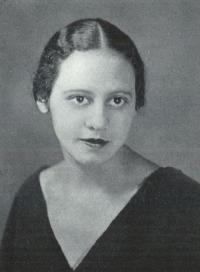
Geraldine Burton Branch, M.D., M.P.H. (1908-2016)
Advisory Dean: Rebecca McAteer, M.D.'08
House Color - Yellow
Geraldine Branch earned a medical degree from New York Medical College in 1936 and later received a master's degree in public health from UCLA. From 1941 to 2001, she worked in New York and California as a gynecologist and obstetrician, family planning clinician, medical examiner, district health officer, medical director, faculty member, and consultant in obstetrics, gynecology, public health and preventive medicine.
Following the Watts riots in 1965 she was instrumental in the founding of the Watts Health Center and very involved in the Watts Health Foundation.
After attending a New York Medical College alumni gathering in Los Angeles, Dr. Branch was inspired to fund a four-year scholarship through the College’s Adopt A Scholar program.
“I'm very proud that God blessed me the way he did. All I had to do was make good grades and behave myself, and I didn't have any problem doing that. I just was blessed, that’s all. I feel like God helped me and I should pass it on. I just hope that the person who gets the scholarship will pass it on after they become successful.”
The Bryant House
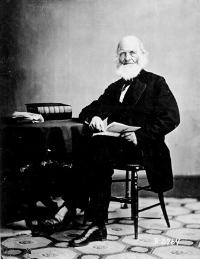
William Cullen Bryant (1794-1878)
Advisory Dean: Ruth Alejandro, M.D. '03
House Color - Red
William Cullen Bryant, the son of a physician, was an editor, philosopher, poet, and lawyer, who substantively influenced the issues of his day through the power of his pen.
New York Medical College owes its founding in 1860, to the vision of a group of civic leaders led by Bryant, who were particularly concerned with condition of hospitals and medical education. They believed that medicine should be practiced with greater sensitivity to the patients. The school opened as the New York Homeopathic Medical College. Bryant subsequently served as president of the College’s Board of Trustees for more than a decade and was the medical school’s first president. The qualities of distinguished and broad leadership that Bryant demonstrated have been characteristic of all William Cullen Bryant medal awardees.
In 1827, he became Assistant Editor of the New York’s Evening Post, a newspaper founded by Alexander Hamilton. Within two years, he was Editor-in-Chief and a part owner. He remained the Editor-in-Chief for half a century (1828–78). Eventually, the Evening-Post became not only the foundation of his fortune but also the means by which he exercised considerable political power in his city, state, and nation.
The Burgess Holley House
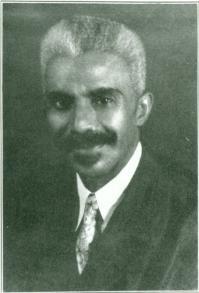
Alonzo Potter Burgess Holley, M.D., Class of 1888 (1865-1932)
Advisory Dean: Blossom Samuels, M.D.
House Color - Green
In 1888, Alonzo Potter Burgess Holley, a Haitian emigre and a graduate of Cambridge, became the first black student to graduate from New York Medical College (NYMC).
After the U.S. Civil War, the need for better health care for African American’s became obvious, as did the shortage of physicians to provide that service. Dr. Potter Burgess Holley was a pioneer in the medical field. The year after he graduated from NYMC he was appointed by the Haitian government as a consul to the Bahamas, where he remained for 12 years.
In addition, he also wrote two books which are still available today: The problems of our race: Our duties and responsibilities and God and the Negro, synopsis of God and the Negro; or the biblical record of the race of Ham.
The Gray Crump House
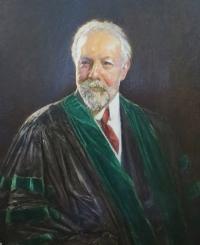
Walter Gray Crump, M.D. (1869-1945)
Advisory Dean: Maria Capparelli, M.D. '07
House Color - White
An 1895 graduate, Walter Gray Crump went on to become a civil rights champion. After graduation, Crump continued to work for the college as a professor of surgery eventually achieving emeritus status.
He established the first scholarship for African American medical students at a White majority medical school in the United States at New York Homeopathic Medical College in 1928. He was also a trustee at Howard University and Tuskegee Institute, a college that was first founded to educate African American clergymen and then expanded into a university of liberal arts and medicine. Although Crump's obituary in the Chironian says he "helped to found the New York Medical College for Women" this college was founded in 1863, six years before Crump was born. It also reports he was “a member of staff until it closed in 1919.” So, while he had an affiliation with the College for Women, its nature remains unclear.
The Kogel House
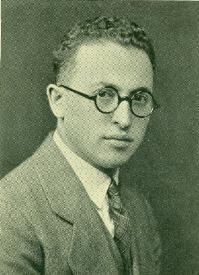
Marcus Kogel, M.D. (1903-1989)
Advisory Dean: Ilyssa Henle, M.D. '09
House Color - Brown
Marcus Kogel earned a medical degree from New York Medical College in 1927, and served as chief resident physician at Metropolitan Hospital from 1927-1929. "During World War II, he served as a colonel in the Army, first as director of the department of military sanitation at the Medical Field Service School in Carlisle, Pennsylvania, and later as a medical inspector and chief of preventive medicine in China, where he was awarded the Legion of Merit for his efforts in combating a cholera epidemic.
He was the New York City Commissioner of Hospitals from 1949-1953, and came to Albert Einstein College in 1954. He established and chaired the Department of Preventive and Environmental Medicine at Einstein and was named the founding dean of Albert Einstein College of Medicine in 1955, a position he held until 1967. Dr. Kogel died of pancreatic cancer at his daughter's home in Croton-on-Hudson, New York on November 28, 1989.
The Lozier House
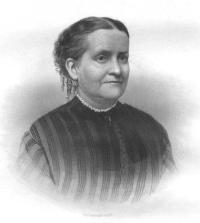
Clemence Sophia Lozier, M.D. (1813-1918)
Advisory Dean: Joseph Giamelli, M.D. '02
House Color - Orange
The founding of the New York Medical College for Women was entirely the result of the indefatigable and earnest efforts of Dr. Lozier. She came from a family of physicians and was determined that sex should not prevent women from seeking a medical education and degree.
New York Medical College and Hospital for Women was incorporated by a special act of the legislature, under the University of the State of New York, on April 14, 1863.
The charter of this institution is still valid. Before this college was opened for women students, there was no place in New York City where a woman could study medicine.
During the next years, 25 in all, when Dr. Lozier was president and dean, she saw the College and Hospital rise from its small beginning of seven students to a list of 219 graduate medical women. She had a high standing in her profession and was often called in consultation by the leading physicians of her day.
The Remsen House
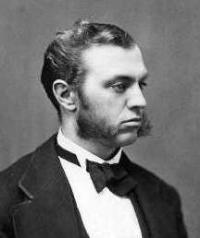
Ira Remsen, M.D., Class of 1865 (1846-1927)
Advisory Dean: Daniel Zelazny, M.D.
House Color - Pink
Ira Remsen was born in New York City in 1846. After receiving his early education in public schools, he entered the College of the City of New York for his undergraduate training. Ira came from a family of physicians, and in an effort to keep with the family tradition he enrolled at New York Medical College, which at the time was called New York School for Homeopathic Medicine.
Dr. Remsen graduated in 1865, and continued in academia. Having earned a Ph.D. in chemistry at age 24, he went on to become a professor and active chemist. He was co-discoverer of saccharin in 1878, and founded the American Chemical Journal in 1879, which was later absorbed by The Journal of the American Chemical Society.
From 1901 to 1912 he was president of Johns Hopkins University. His biography notes his influence on the study of chemistry, explaining that "he opened up a life work in chemistry as a career to many, and developed a spirit of research that spread over the country."
The Steward House
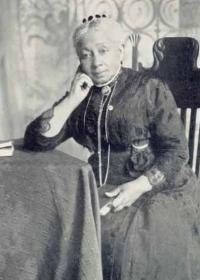
Susan Smith McKinney Steward, M.D., Class of 1870 (1847-1918)
Advisory Dean: Roger Chirugi, M.D.
House Color - Black
When she graduated valedictorian from New York Medical College for Women, Susan Smith was the third African American woman to ever earn a medical degree, and the first in New York State.
After graduation, Dr. Smith (her later husbands were McKinney and Steward, and she assumed their names) practiced in Brooklyn and Manhattan and was the founder of The Women's Hospital and Dispensary. Dr. McKinney Steward was a member of the Kings County and New York State Homeopathic Medical Societies and served as an official physician for The Brooklyn Home for Aged Colored People, one of the early institutions in the community of Weeksville where she was born.
Junior High School 265 in her home borough of Brooklyn was dedicated as Dr. Susan S. McKinney School in 1974.
The Stowe-Whitt House
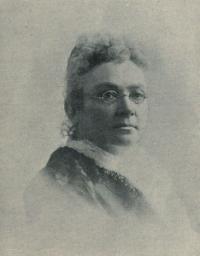
Emily Howard Jennings Stowe, M.D., Class of 1867 (1831-1903)
Advisory Dean: Rachelle Lodescar, M.D. '13
House Color - Purple
Emily Howard Jennings Stowe, a Canadian, was denied admission to the exclusively male, Toronto School of Medicine. Accepted into the New York Medical College for Women, Stowe graduated with an M.D. in 1867. She was the first female physician to receive a medical education in New York City.
New York Medical College has played an important role in promoting the presence of women in medicine. At this time, The American Medical Association did not allow female doctors to become members. In addition, most hospitals did not permit women to obtain internships, and thus the only hospital available to women for training was the Women's Hospital associated with New York Medical College.
When Stowe returned to her native country, she became the first female physician in Canada.
Recognizing the necessity of medical education for women, Stowe challenged the right of Canadian medical schools to exclude female students and co-founded the Women's Medical College in Toronto in 1883. As a suffragist and founder of the Toronto Women's Suffrage Association in 1877, she also significantly contributed to the advancement of women's voting rights.
Ray T. Whitt, M.D. (1956-2024)
Ray T. Whitt took an unconventional path to becoming a physician, first attending art school for graphic design and working as a flight attendant for many years, before deciding to follow his love of science and become a doctor when he was 28. It would take Whitt more than 10 years to fulfill his dream, graduating from medical school when he was 39.
As he embarked on his residency in New York Medical College’s Obstetrics and Gynecology Residency Program at New York Health + Hospitals/Metropolitan, so too began his long association with NYMC, which would span the remainder of his 30-year career. After completing his residency, he joined the staff of Metropolitan as an attending physician and the faculty of NYMC as an instructor of obstetrics and gynecology.
Over the ensuing decades, he served as site director at Metropolitan for 20 years, as assistant professor of obstetrics and gynecology, and as co-clerkship director of the obstetrics and gynecology core clerkship, leaving an indelible mark on hundreds of patients, residents, and medical students.
Later in his career as he stepped back from his physician role at Metropolitan, he took on new roles at NYMC—as house advisory dean of Stowe House, joining NYMC Chancellor and CEO Edward Halperin, M.D., M.A., in teaching the first-year history of medicine course, and chairing the SOM Admissions Committee.
In recognition of his impact on NYMC as a devoted teacher and mentor, a kind and empathic human being, and a pillar of the academic community, the Stowe House was renamed the Stowe-Whitt House in 2024.
The Sunshine House
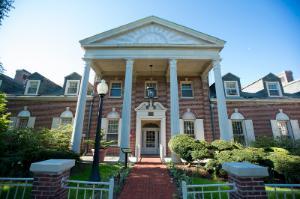
Sunshine Cottage (1931 - present)
Advisory Dean: David Garber, M.D. '15
House Color - Yellow
In 1931, long before it housed NYMC’s administrative offices, the Sunshine Cottage building was Grasslands Hospital, a 35-bed children's tuberculosis hospital. During the 1940s, when Westchester experienced a severe polio epidemic, the Cottage treated many children with the dreaded disease. The Cottage was adorned with animal and nature motifs that were created to raise the spirits of the sick children who were being treated here.
Today, you will see, sprinkled throughout campus, several statues that originally stood on pillars around the Cottage, which may seem whimsical at first glance. The statues are thought to have been modeled after characters in English author Lewis Carroll's novel Alice's Adventures in Wonderland (1865). In Chapter VI, the Fish-Footman and the Frog-Footman exchange notes to invite the Duchess to a croquet party with the Queen when they bump their heads together and get their wigs tangled. Alice thinks it's very amusing as she watches it all from afar.
Closer reflection reveals each historic artifact has now been purposefully placed, maintained or highlighted via signage as a way of paying homage to New York Medical College’s storied past and to represent the College’s longstanding commitment to caring for the complete person, mind, body, and spirit.
The Wright House
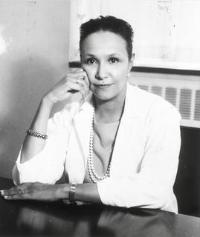
Jane C. Wright, M.D., Class of 1945 (1919-2013)
Advisory Dean: Joanna C. Pessolano, M.D. ‘81
House Color - Blue
Jane Wright followed in her father's footsteps and became a doctor and cancer researcher. A 1945 graduate of New York Medical College, Wright went on to become an associate professor of surgical research at New York University and director of cancer chemotherapy research at New York University Medical Center in 1955.
In 1967, she was named professor of surgery, head of the Cancer Chemotherapy Department, and associate dean at New York Medical College, becoming the highest ranking African American woman at a nationally recognized medical institution, and certainly the highest ranked African American Women Physician. In 1971 Wright became the first woman to be elected president of the New York Cancer Society. Dr. Wright retired in 1987, having achieved many "firsts" and having published many research papers on cancer chemotherapy.

